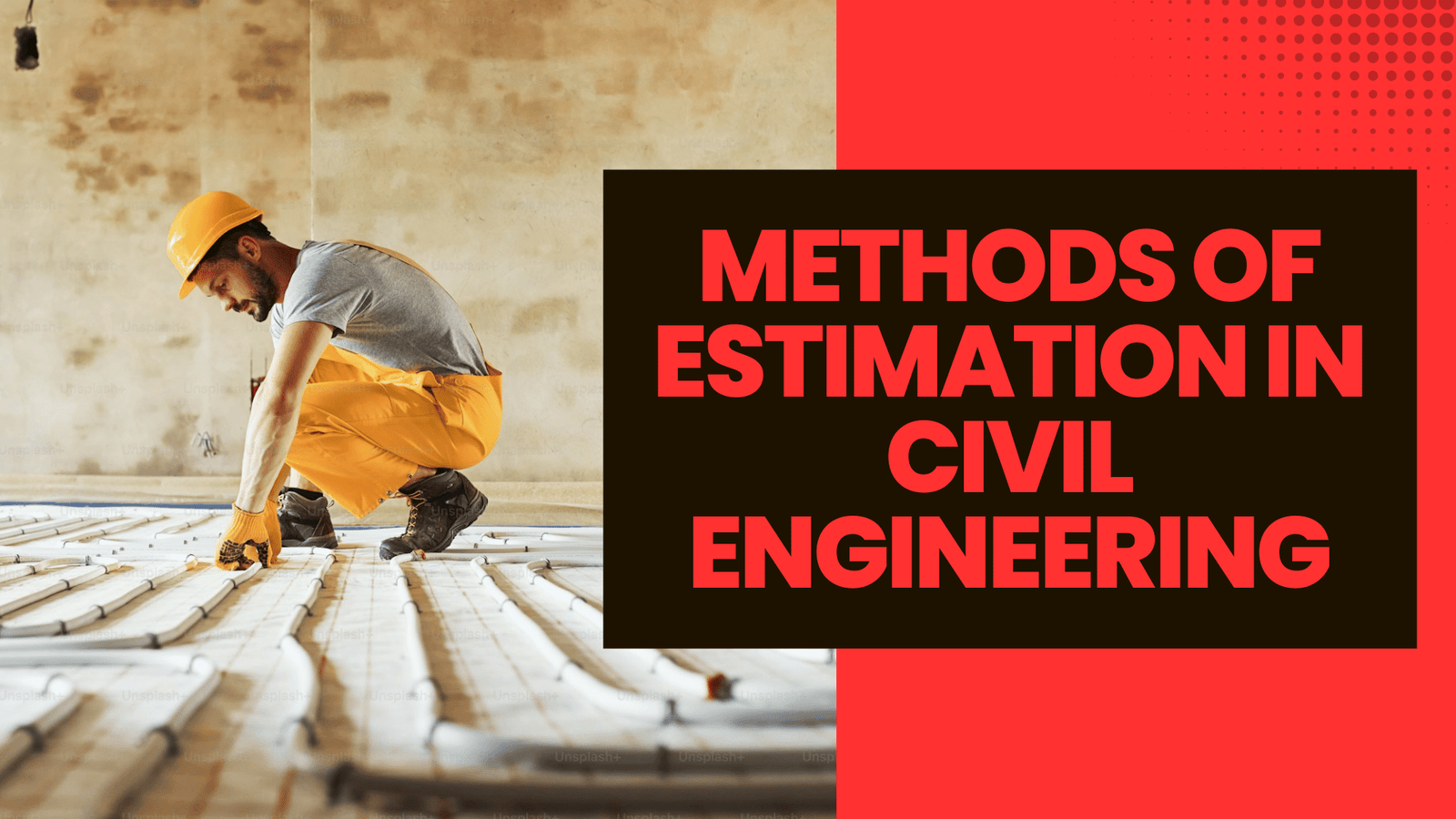A crucial component of civil engineering design projects is quantity estimation. Usually, the design team’s proposal package includes estimates given to the client. In addition to estimating the materials that go into completing the project, it also entails estimating the personnel and equipment needed for construction to accomplish the project. Construction Estimating Services are the way forward.
Different Estimate Types
Estimates made during the design phase assist the owner and project team understand project costs and viability, enabling the planned construction to stay within the owner’s budget. Estimates are, therefore, often included with every design proposal.
Rough or Approximate Estimates
For example, the schematic-level design is amenable to approximations based on an engineer’s prior cost experience. For instance, one may apply a rough estimate of the average square footage cost of a parking lot at grade to the specific area for a project. The design team can work with a rough idea of an item’s cost while finalizing the details of the design aspects, even though this estimate may not be exact.
Design contingencies are part of early estimates. Given the uncertainties of a design during the early phases of development. To lower the risk of excessive construction budget in the project design completes at a later time.
This is an increase in the percentage of the total project cost. As a project moves along, there is usually less uncertainty regarding the design; therefore, as the design advances, the amount of design contingency may be reduced.
Detailed Estimates
These estimates dissect design elements into their components to increase accuracy. This covers the various expenses for labor, materials, and equipment. Because of this, the term “unit cost approach” describes thorough cost assessment.
Material Takeoffs
The estimation’s material component, which involves calculating material quantities on plans, sections, elevations, or other design drawings, is sometimes called a “takeoff.” The usual unit of measurement for the evaluated substance is a determining factor in the estimation calculations. Depending on the material, this might be based on total weight, unit count, area, volume, or length.
To calculate the total cost of a material, multiply the amount of the material by the unit cost. This yields the cost component of the estimation. For instance, a unit cost known as cost per cubic yard would be multiplied by the computed volume of dirt in cubic yards.
Similarly, to estimate the total cost of the doors on a project easily by multiplying the number of doors by the unit cost, which is the cost per unit. Our construction takeoff services are best suited for the task
Calculating Unit Prices
The usual source of unit costs is industry estimate databases. Information that is current and most accurate may be found through web-based services. Unit costs vary depending on place and time owing to supply and demand, inflation, and labor availability, among other things.
The databases calculate a number for use in estimations using recent historical data. To obtain a more accurate estimate, an estimator must examine the database values and determine whether they are acceptable for the project. This is because the particulars of the project may need changing the numbers.
Permissions
Certain things shown in an estimate using an allowance instead of a unit cost basis. Though a specific quantity may not be known due to design uncertainties or a lack of clarity in the present design stage, the allowance is usually based on some assumption regarding the amount of material or effort necessary.
Immaterial Elements
Labor and other non-material work components often have an overall labor hour unit of measurement. The labor cost is by multiplying the labor rate by the labor hours. Working overtime or during off-peak hours are essential as this raise the labor cost per unit.
Earthwork
Civil engineers should know the standard techniques for grading work-related earthwork calculations. There are two types of earthwork: filling and cutting. These can by using various techniques, such as the section, block (or grid), and average approaches. For a particular project type or design stage, each could be best suited.
The average approach involves calculating the average level of the current conditions and the average level of the final suggested conditions and then multiplying the difference by the work area. This indicates how much fill or excavated dirt must be transported to and from the site. This approach would best suit a smaller project or as a preliminary estimating tool.
Block or Grid Approach:
Using the block (or grid) approach, an area is divided into smaller sections. The difference between the finish grade and the existing grade in each section is calculated.
To calculate the total amount of cutting or filling, one would then multiply the area of each of these blocks by the difference found from each block and the sum of these values. The amount of dirt that has to be removed or brought in total will be shown by the difference between the two totals. The accuracy of this approach would be higher than that of the average method.
Section Technique:
The section method works well when considering a linear region in an infrastructure project, like a new highway. Sections are taken periodically along a route that passes through the project area, as at a road’s centerline.
Using calculating techniques like the trapezoidal method, which determines complicated shaped sectional areas by first reducing them into smaller areas, the area difference between the proposed topography and the current terrain inside these sections may be estimated. To calculate the volumes of cutting or filling, these areas would then be multiplied by the separations between the sections taken along the line.
After survey data of the terrain is input into the program, construction estimating software frequently assists in the generation of these parts.
Soil Swell:
Once dug, a particular amount of soil usually expands to a larger volume. Therefore, this is a part of the estimation.
Final Thoughts
In conclusion, one of the most essential things in civil engineering is knowing how to calculate expected costs and do quantity takeoffs. Civil engineers understand the different sorts of estimates and how they provide the most accurate cost estimates.
Additionally, they must be conversant with the specific techniques in civil engineering to estimate typical tasks like earthwork. Precise quantity and cost estimations are necessary for successful completion and within budget.
Influential Elements
The project’s complexity and scale have a significant impact on project estimates. Larger projects typically have higher estimates than smaller, less complex ones because they require more time and money.
Experts in civil engineering create estimates using their expertise, resources, and knowledge. These professionals evaluate the state of the market to determine a range of values based on building expenses, enabling the creation of precise and reasonable estimations.
The time and materials we require to perform tasks are the primary foundation for estimations. In addition, estimators look into any hidden circumstances that can affect the job and consider site accessibility.
Cost Estimators are essential for doing a thorough analysis of market circumstances and producing estimates that are consistent with the state of the economy. They could also find other expenses not typically related to the project, such as the cleanup of dangerous materials. This offers a comprehensive and exhaustive estimate that considers all possible costs.




